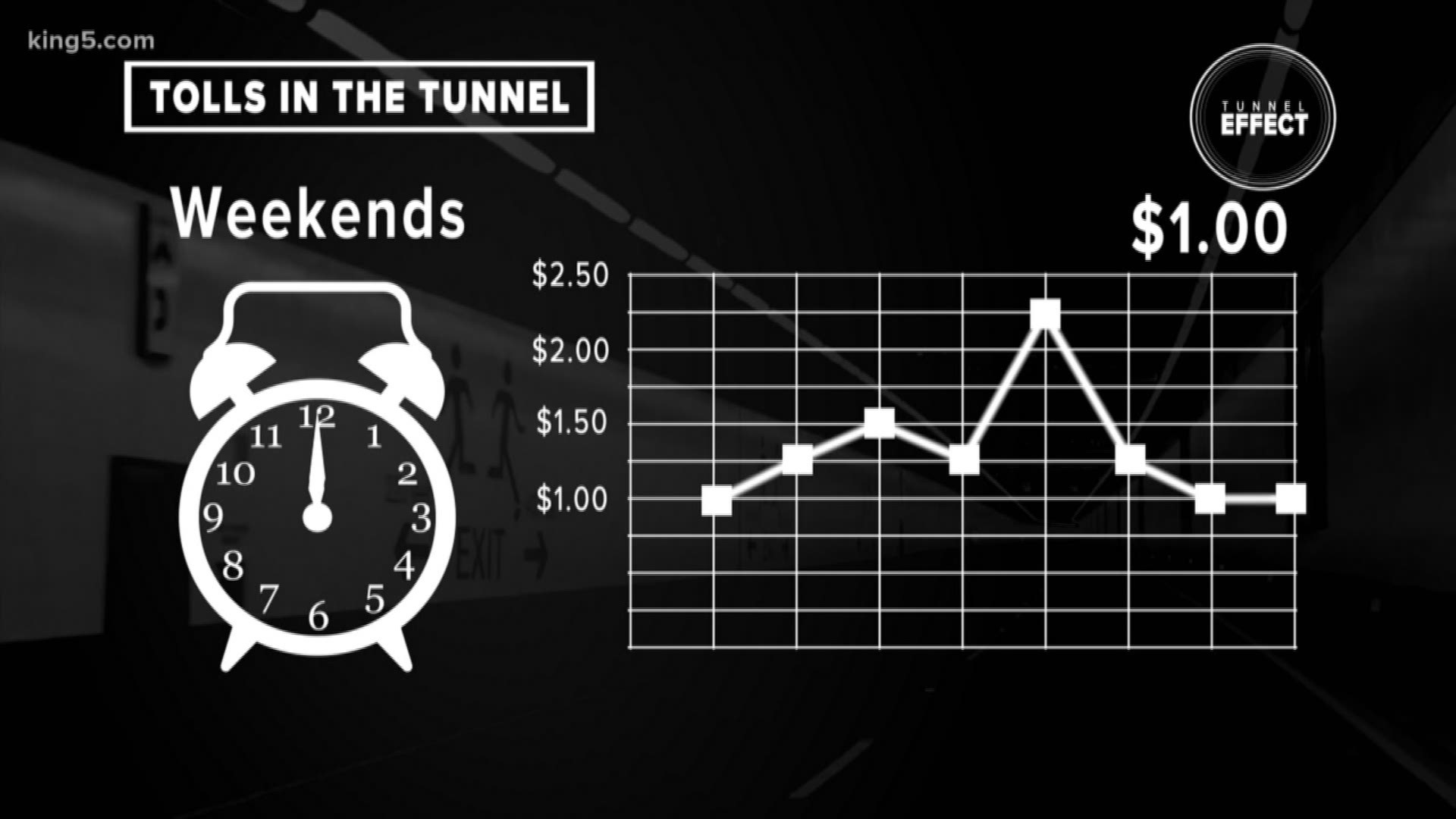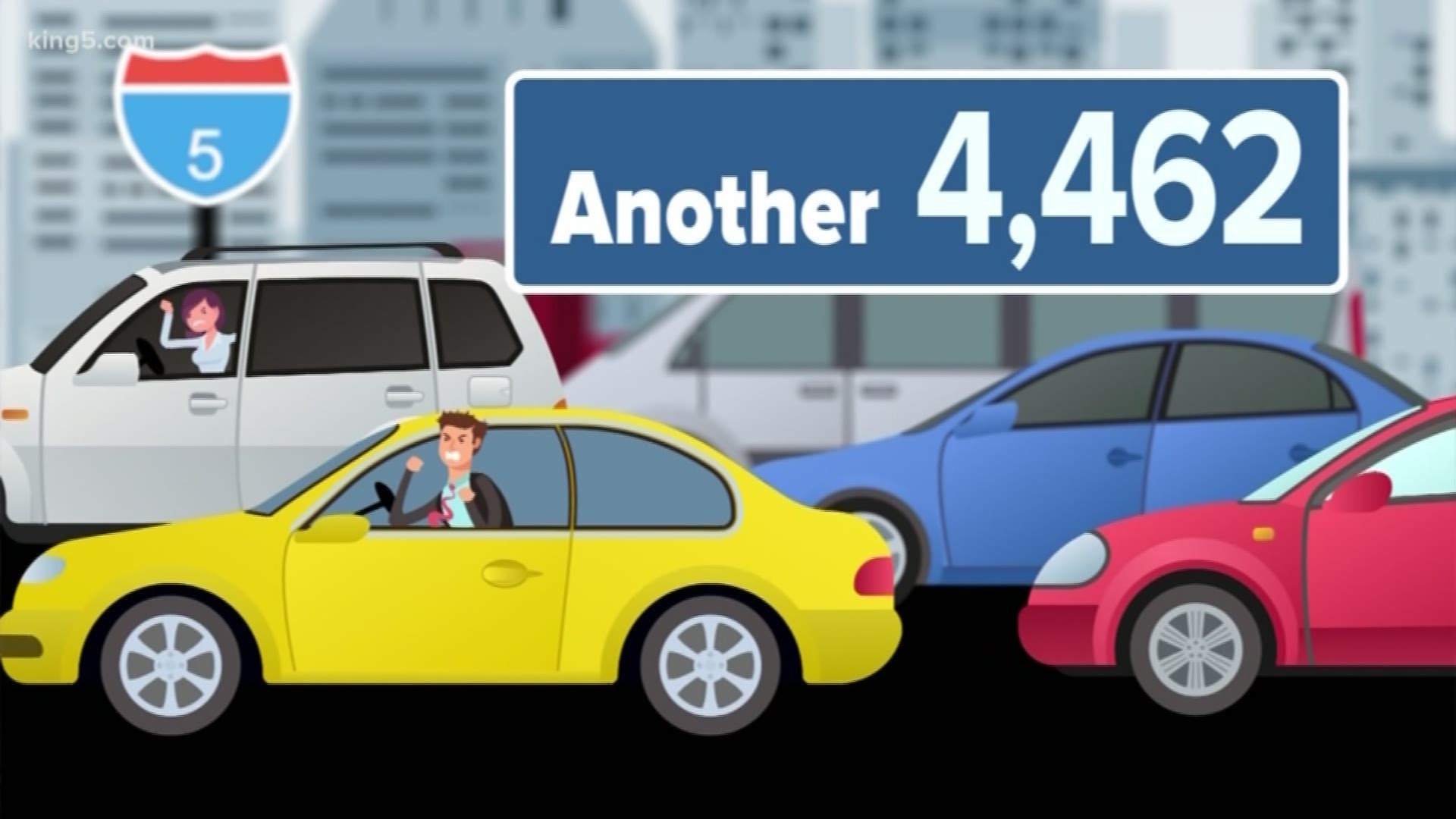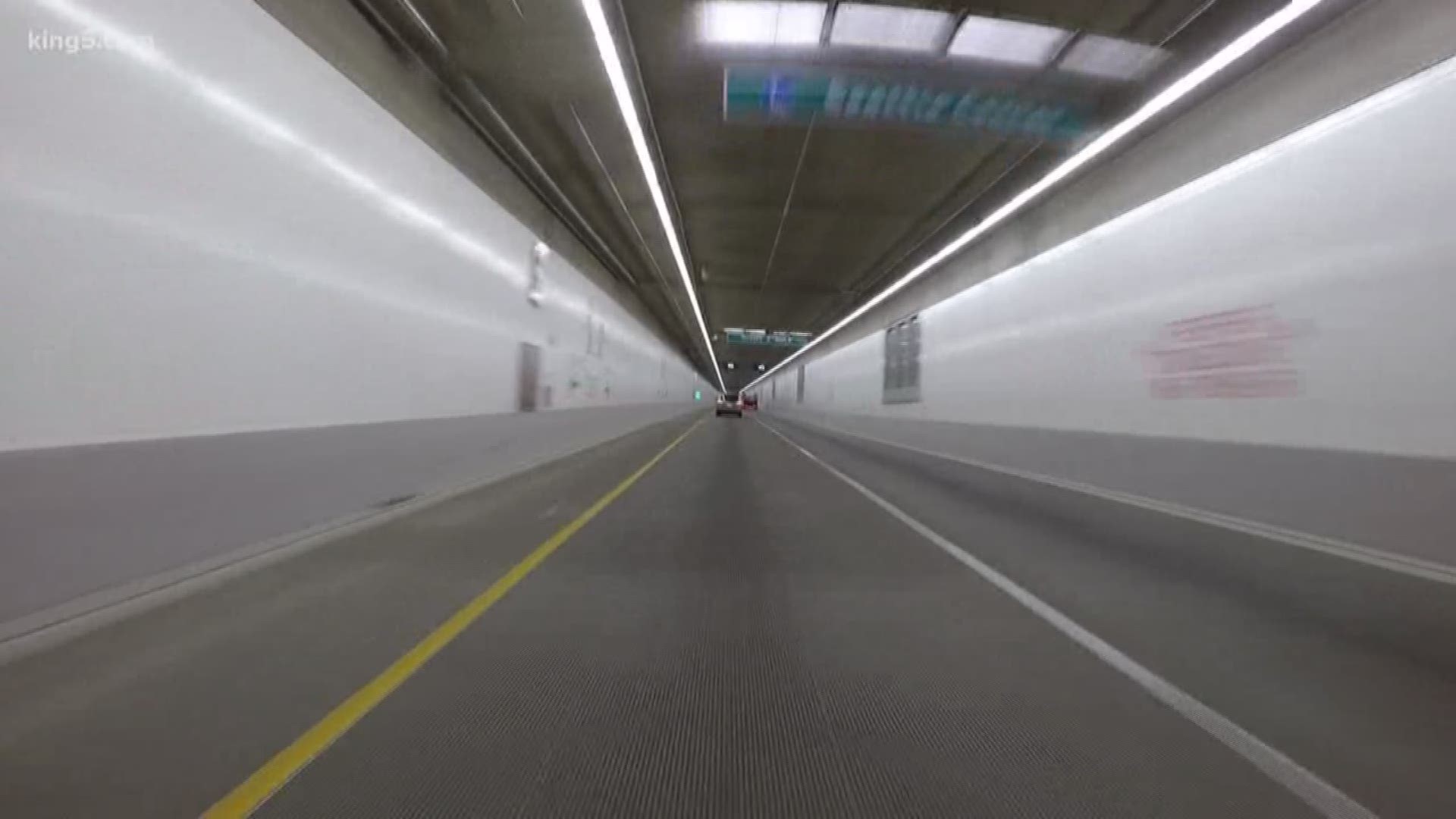SEATTLE — Drivers will now be charged for northbound and southbound trips through the SR 99 tunnel in Seattle.
Tolling went into effect Saturday. With a federal holiday Monday, the first traffic test post-tolling will be Tuesday.
Here are five things to know to get prepared for the switch.
How much will it cost?
Tunnel tolls will range between $1 and $2.25 depending on the time of day. Drivers will pay $1.50 during peak morning commute hours and $2.25 during peak evening commute hours.
Here’s a breakdown of the tolling schedule:
Weekdays:
6-7 a.m. – $1.25
7-9 a.m. – $1.50
9 a.m.-3 p.m. – $1.25
3-6 p.m. – $2.25
6-11 p.m. –$1.25
11 p.m.-6 a.m. – $1
Weekends: $1
How do I pay?
Drivers can use either a Good To Go! Pass, or they can pay by mail. However, drivers who receive a bill in the mail will be charged an extra $2.
With a Good To Go! pass, the toll payment will automatically be deducted from your account when you drive through the tunnel. Drivers can also manually replenish their accounts or pay in cash, but that must be done in person at a walk-in center.
The pass can also be used on other toll roads, such as State Route 520 or the Tacoma Narrows Bridge.
How do I get a pass?
WSDOT offers four different types of Good To Go! passes:
- A sticker
- Flex Pass
- Motorcycle Pass
- License plate Pass
For more information visit the Good To Go! website.
How will tolling impact traffic?
Approximately 80,000 vehicles use the SR 99 tunnel daily, according to WSDOT. Officials believe the toll will deter some drivers from using tunnel, like what happened when SR 520 was first tolled. However, it’s unclear how many drivers will decide to take different routes.
In a KING 5 poll and analysis from September 2018, we asked commuters which route they would use to get downtown. Based on the poll, 42% of drivers said they would take Interstate 5 to get downtown. About 22% of drivers said they would take the tunnel, which was the second most popular option. Another 14% said they would switch to mass transit, and the remaining 22% said they would take surface streets.
Once tolling begins, WSDOT expects peak period volumes to range from 3,200 to 4,100 vehicles per hour, which is a drop from the approximately 5,500 vehicles that used the tunnel during peak times in September.
"It's important to caveat that these forecasts are conservative in order to ensure we can meet our revenue obligations," WSDOT spokesperson Emily Glad wrote in an email. "Ultimately it's hard to predict driver behavior."
Why start tolling now?
Tolling was originally supposed to start at the beginning of summer but was delayed several months due to issues with a transition to a new back office system, which included functions like customer service, operations, and account management.
WSDOT also weighed other factors when setting the tolling start date, including demolition of the central waterfront portion of Alaskan Way Viaduct, which wrapped up last month, and toll equipment testing.




